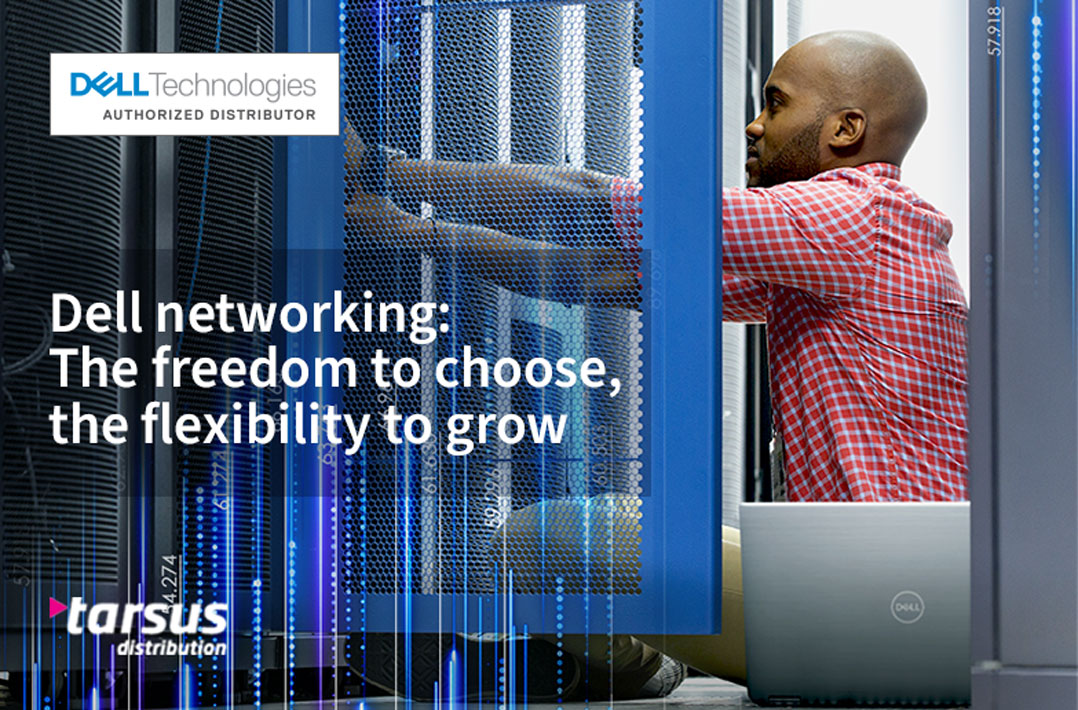 Today’s pace of change is unprecedented, particularly when it comes to technology. Our world is advancing rapidly, with factors such as the global Covid-19 pandemic, a slew of emerging technologies and a flood of data from multiple sources drowning the enterprise, putting new demands on IT infrastructure. This, in turn, is placing huge strain on networks, which no longer only have to keep up with this pace of change, but need to be future proof, and ready to handle whatever is thrown at them next.
Today’s pace of change is unprecedented, particularly when it comes to technology. Our world is advancing rapidly, with factors such as the global Covid-19 pandemic, a slew of emerging technologies and a flood of data from multiple sources drowning the enterprise, putting new demands on IT infrastructure. This, in turn, is placing huge strain on networks, which no longer only have to keep up with this pace of change, but need to be future proof, and ready to handle whatever is thrown at them next.
So says Chris Larkins, business unit manager of enterprise at Tarsus, South Africa’s leading ICT distributor, adding that as the networking space that is constantly evolving, tech departments have felt as if they were constantly operating in response mode, and having to sort out issues such as shifting traffic patterns, and using solutions that were rigid and slow, unable to scale at will, and lacking interoperability as they were proprietary and inflexible.
Reach out to Tarsus Distribution today
“For many years, network traffic patterns were predictable to a certain extent, but that is no longer the case. Covid-19 saw entire workforces moving to home almost overnight, driving tremendous shifts in network traffic. Where once businesses operated from a central location within the network, staff members began working remotely and accessing applications and files that were stored in the company data centre from locations outside the business’s control. This added a tremendous burden to the network.”
Larkins says while infinitely more network traffic was being generated using emerging technologies such as machine learning, artificial intelligence, the internet of things, virtualisation, intelligent automation and analytics, all of which have driven a massive increase in the collection and flow of data.
“And although huge strides have been made when it comes to innovations in servers and storage solutions, such as convergence, virtualisation and disaggregation, networking innovation has lagged behind,” he explains. “Yesterday’s legacy networking solutions were inflexible and proprietary, creating a mountain of additional work for IT admins when it came to solving problems and conducting maintenance, and therefore taking time away from tasks that add real value, such as innovation and modernisation.”
However, Larkins says one company that has been focused on changing that is Dell Technologies. “The ICT giant made it its mission to offer a perfect carrier-grade network solution for businesses in every industry. Dell’s solutions are unique and set themselves apart from their competitors, by bringing an end-to-end offering and global supply chain that meets the need of every organisation’s specific networking objectives.”
Scalability
He says Dell’s revolutionary open networking vision offers previously unseen scalability as well as increased agility in solutions that are open and disaggregated. “In this way, organisations can cherry-pick the hardware, software and network operating systems that are best suited to their unique data centre and edge environments. Concurrently, they can harness all the benefits of automation and next-generation management tools and other key integrations that make their experience with open networking technology both seamless and simple.”
While most networking vendors run systems with proprietary features and functionality, Dell realised that this hampers innovation. “In the past, this might not have been a major issue for companies who could afford to wait around for the next system upgrade. But who can do that nowadays? Today’s reality is that organisations must move faster than the pace that proprietary systems with long development cycles allow.”
Forward-thinking businesses need easier and more seamless ways of keeping up with demand, Larkins explains. “They require a network that is optimised for today, and at the same time offers the flexibility needed to adopt new functionality and features in an instant, without having to undergo an arduous, total overhaul of the IT infrastructure.”
Similarly, most network operating systems are still highly complex, employing command-line interfaces for management, which are onerous, labour intensive and highly prone to error. “This, along with all the other factors I’ve mentioned, has driven demand for larger, carrier-grade networks, which can scale faster and are more flexible and open to change.”
Dell focused on simplifying multi-cloud connectivity and significantly improving the networking experience for its customers
This is where Dell excels, says Larkins. “Being keenly aware of the challenges posed by slow-moving and proprietary networks, Dell focused on simplifying multi-cloud connectivity and significantly improving the networking experience for its customers. The company realised that incredibly scalable and agile networking solutions were the only answer, as these can help businesses address all these challenges.”
He says this is why Dell’s open networking and standards-based approach entirely disaggregates not only hardware and software, but the full networking operating system itself. “This gives organisations far more freedom to choose the networking components that fit their requirements, and at the same time, remove functionality that they neither want nor need. With Dell, customers can design and build a network that is tailored to meet their unique needs. And as these needs grow or shift, they can rest assured they have a network that is flexible, agile, and simple enough, to grow alongside them.”
For more information on Dell’s flexible networking solutions and to partner with professionals to scope and design a solution that meets the needs of your organisation’s specific networking objectives, reach out to Tarsus Distribution today.
- This promoted content was paid for by the party concerned




